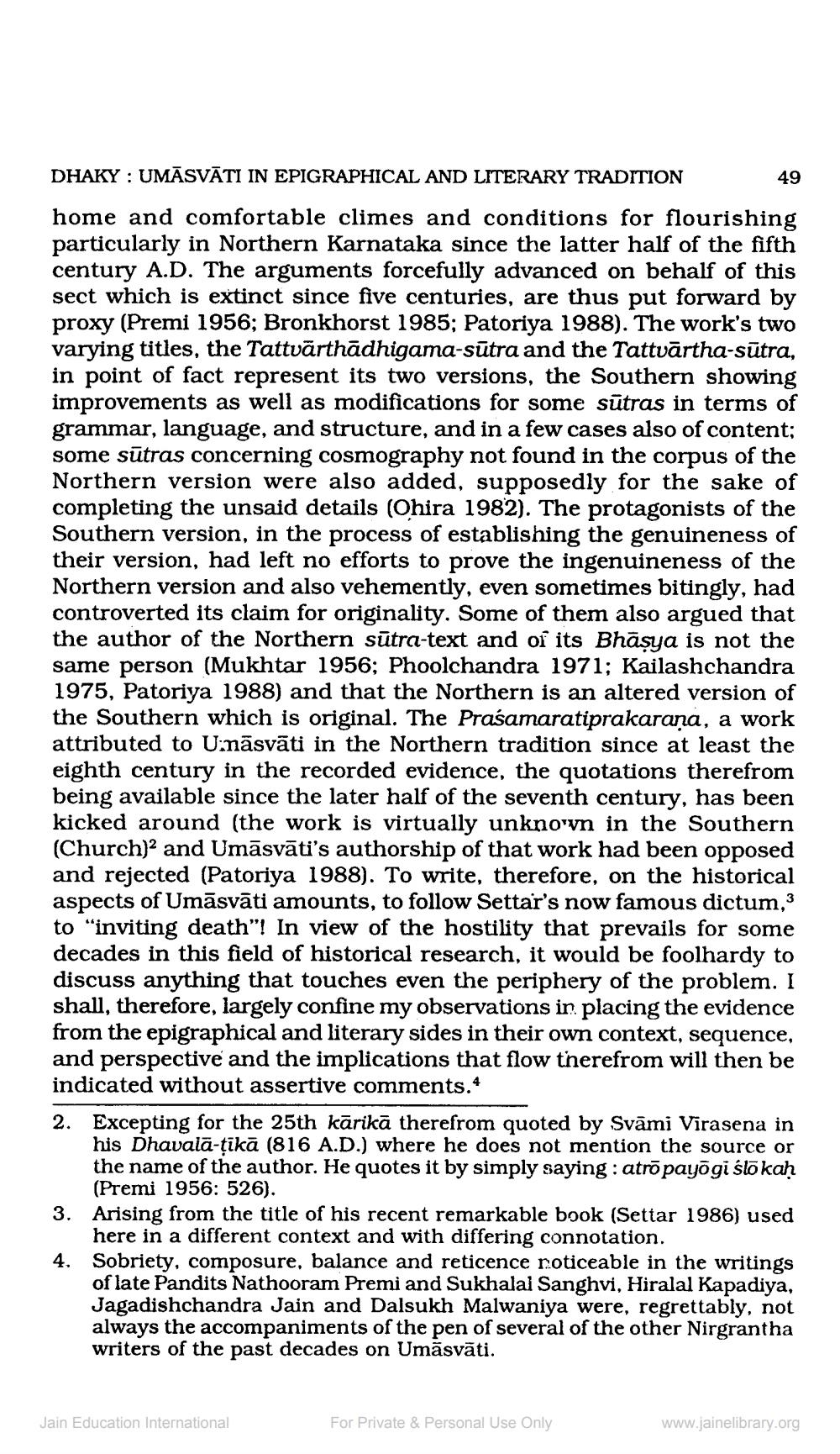________________
DHAKY : UMĀSVĀTI IN EPIGRAPHICAL AND LITERARY TRADITION
49
home and comfortable climes and conditions for flourishing particularly in Northern Karnataka since the latter half of the fifth century A.D. The arguments forcefully advanced on behalf of this sect which is extinct since five centuries, are thus put forward by proxy (Premi 1956; Bronkhorst 1985; Patoriya 1988). The work's two varying titles, the Tattvärthādhigama-sūtra and the Tattvārtha-sūtra, in point of fact represent its two versions, the Southern showing improvements as well as modifications for some sūtras in terms of grammar, language, and structure, and in a few cases also of content; some sūtras concerning cosmography not found in the corpus of the Northern version were also added, supposedly for the sake of completing the unsaid details (Ohira 1982). The protagonists of the Southern version, in the process of establishing the genuineness of their version, had left no efforts to prove the ingenuineness of the Northern version and also vehemently, even sometimes bitingly, had controverted its claim for originality. Some of them also argued that the author of the Northern sūtra-text and of its Bhasya is not the
n (Mukhtar 1956; Phoolchandra 1971; Kailashchandra 1975, Patoriya 1988) and that the Northern is an altered version of the Southern which is original. The Praśamaratiprakarana, a work attributed to Uināsvāti in the Northern tradition since at least the eighth century in the recorded evidence, the quotations therefrom being available since the later half of the seventh century, has been kicked around (the work is virtually unknown in the Southern (Church)2 and Umāsvāti's authorship of that work had been opposed and rejected (Patoriya 1988). To write, therefore, on the historical aspects of Umāsvāti amounts, to follow Settar's now famous dictum,3 to "inviting death"! In view of the hostility that prevails for some decades in this field of historical research, it would be foolhardy to discuss anything that touches even the periphery of the problem. I shall, therefore, largely confine my observations in placing the evidence from the epigraphical and literary sides in their own context, sequence, and perspective and the implications that flow therefrom will then be indicated without assertive comments. 2. Excepting for the 25th kārikā therefrom quoted by Svāmi Virasena in
his Dhavalā-tikā (816 A.D.) where he does not mention the source or the name of the author. He quotes it by simply saying: atrā payogi ślokah
(Premi 1956: 526). 3. Arising from the title of his recent remarkable book (Settar 1986) used
here in a different context and with differing connotation. 4. Sobriety, composure, balance and reticence noticeable in the writings
of late Pandits Nathooram Premi and Sukhalal Sanghvi, Hiralal Kapadiya, Jagadishchandra Jain and Dalsukh Malwaniya were, regrettably, not always the accompaniments of the pen of several of the other Nirgrantha writers of the past decades on Umāsvāti.
Jain Education International
For Private & Personal Use Only
www.jainelibrary.org




